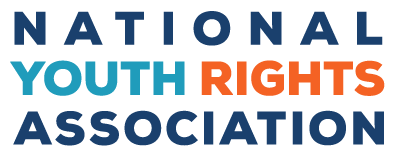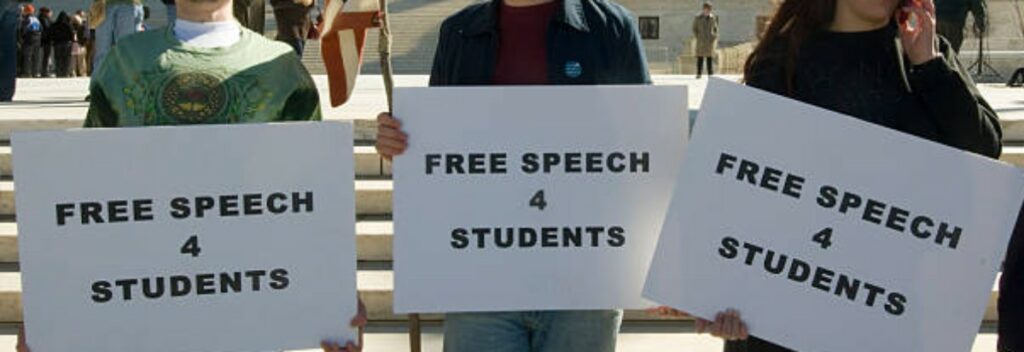Many school districts in the United States restrict young people’s freedom of expression by making rules around what is acceptable to wear. School dress codes may require students to wear a certain outfit or uniform or may ban specific items, such as hats, jewelry, religious symbols, team jackets, “unnatural” hair colors, items with political messages, or “immodest” clothing. School authorities have argued that certain clothing is inappropriate, disruptive, distracting, or inflammatory, but often with little evidence and always without any input from the students themselves. Students have been humiliated, sent home, forced to change into clothes with “Dress Code Violation” written on them, suspended, or even handcuffed because of dress code violations. At one high school in New York, 200 students were given detention for violating dress codes. Being able to wear what you want is part of a person’s right to freedom of speech, which NYRA believes everyone deserves regardless of age.
Dress Codes and Sexism
Many students have challenged dress codes because of sex or gender discrimination. In fact, some schools have tried to implement rules that only apply to certain students based on their gender. Male students have been prevented from having long hair or earrings or told that only female students can wear bandannas or their clothes aren’t appropriate for boys. Transgender and gender-fluid students may also be forced to wear clothing stereotypical of a gender they don’t identify with. Female students are told they can’t wear certain clothes because male students will find it “distracting,” which may include any clothing showing shoulders or collarbones. Even students in kindergarten have been forced to change their clothes because their shoulders were exposed. Schools have also punished female students wearing clothes that allow them to feel comfortable and concentrate in extremely hot weather.
Adults have also tried to police young people’s clothing outside of academic settings where no one can be “distracted” from learning. Female students have been sent home from prom both for wearing clothing that is “too revealing” and for wearing a tuxedo.
School rules about students’ hair can also have a gender bias when male students have been sent home for wearing a wig or when schools have rules that “a boy’s hair may not be longer than the bottom of a regular shirt collar.” Additionally, female students have been punished for having short hair. (In one case, a female student was suspended for shaving her head, even though she did so in support of her friend who lost her hair due to chemotherapy.)
Because these dress codes are often applied differently to different students and include forcing students to dress the way administrators think a particular gender should dress, they are likely to be in violation of anti-discrimination laws, such as Title IX.
A Student’s Right to Freedom of Religion and Cultural Expression
The First Amendment of the Constitution mandates that public schools remain neutral on the subject of religion. However, school administrators often misinterpret this and attempt to curtail all religious expression. Students have been suspended or otherwise disciplined for wearing rosary beads, crucifixes, yarmulkes, headscarves/hijabs, and pentagrams.
School administrations have also attempted to ban students from wearing hairstyles that reflect their ethnic and or cultural heritage. Some school dress codes have prohibited “extreme or distracting” hairstyles, which can include “dreadlocks, cornrows, twists, or mohawks” and “afros more than two inches in length.” Students are also subjected to having their hair inspected or suspended for wearing box braids. These policies are frequently denounced for singling out African-American students.
Uniforms
Preventing one or a small group of students from using their clothing as a means of expression has been repeatedly found to be unconstitutional. However, schools attempt to get around this by implementing uniform policies that apply to all students. Uniforms restrict students’ individuality, expression, and creativity. It is an unnecessary expense for students and their families, and, when subsidized, taxpayers. The vast majority of students resent wearing uniforms, but their wishes are not taken into consideration. In spite of this resistance, the percentage of public schools requiring uniforms increased from 12 to 20 percent from 2000 to 2014. Schools where students of color comprise over 50% of the student population are 24 times as likely to require uniforms than schools where students of color only comprise 20% of the student populations.
The increase in the use of uniforms may be due to a mistaken belief that uniforms prepare students for the workplace and reduce bullying in schools. Furthermore, the use of uniforms in public schools However, unlike students, adults have the freedom to decide where they will work, and can easily avoid jobs that don’t require uniforms if they choose to. Additionally, research shows that uniforms do not reduce bullying. In fact, one study shows that “school uniforms increased the average number of assaults by about 14 [per year] in the most violent schools.” However, whether uniforms “work” or not is immaterial. The choice of what clothing to wear is highly personal and one that young people are fully capable of making without interference.
What you can do
Things to Remember
- If your school’s dress code policy is different for male and female students, it may violate the law.
- If your school only singles out clothing with particular writing, it may be a free speech issue.








